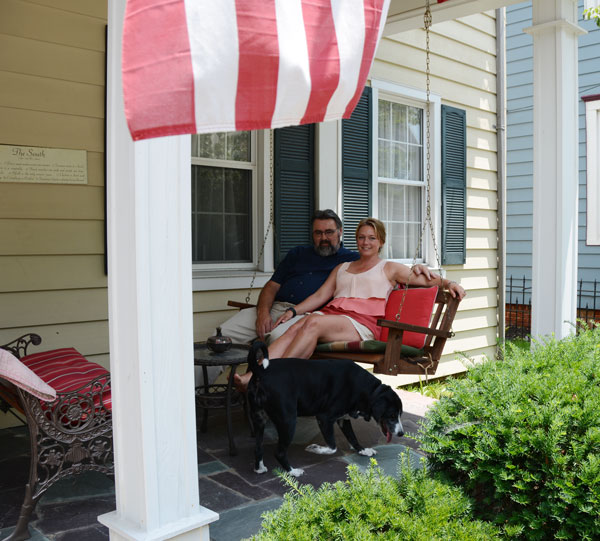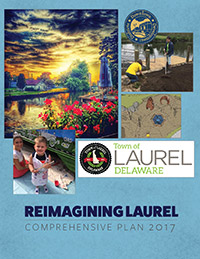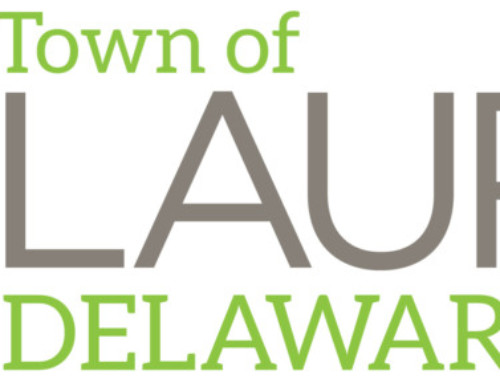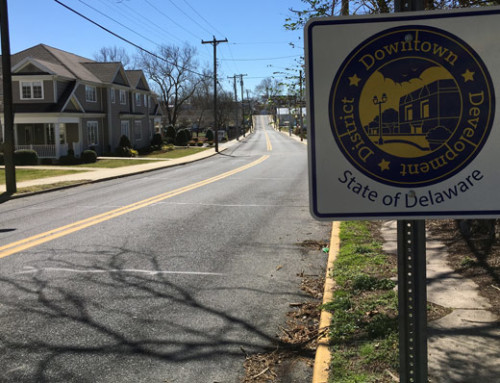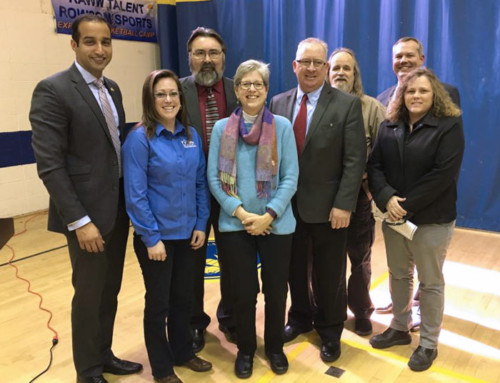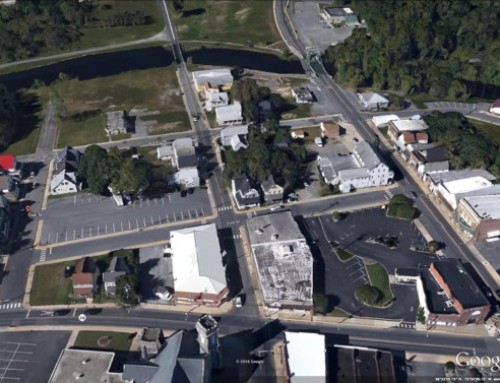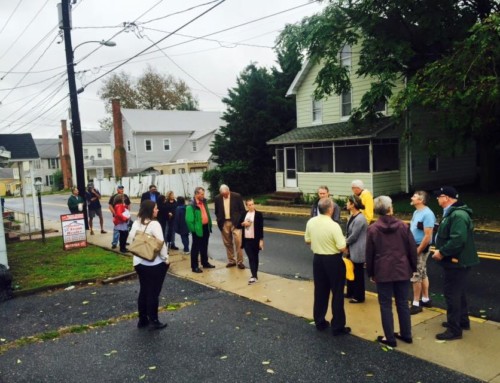Photo: Jeff and Laurie Roberts on their Central Avenue front porch.
Working on several projects for Laurel, I have spent about two years walking its neighborhoods, talking with its citizens, digesting its demographics, taking hundreds of photographs, and making maps that help tell its story.
I am wrapping up work on Laurel’s 10-year comprehensive growth plan, and the plan makes one big assumption: that the town’s leaders will make the decisions needed to transform Laurel from the poorest town in the state to a vibrant hub with new residents, new businesses, and new visitors. I hope they agree that attention to the waterfront and business district and cracking down on blighted properties will do more to turn around the town than waiting for a developer to drop 1,200 houses on its outskirts. That has not happened in Delaware since the recession; there are partially built-out “zombie” developments all over Sussex County.
Laurel has had a lot of good news lately. We are one of eight municipalities in Delaware that achieved a Downtown Development District designation. That means that businesses, landlords and residents within this district have a heaping plate of incentives encouraging them to rehabilitate their properties or build something new.
Ramble becoming a reality
The Ramble waterfront redevelopment project is happening. Grants have helped pay for necessary environmental assessments and infrastructure planning. The Rotary built the kayak launch, and the nature-based playground is completely designed and about to start fund-raising. A developer is interested in building the signature cottages on the creek.
A unique collaboration between the town, the Laurel Redevelopment Corporation, Milford Housing Development Corporation and Sussex County Habitat for Humanity resulted in Strong Neighborhoods Fund application for $550,000 to build or purchase and rehabilitate 10 owner-occupied homes in the Old Town Neighborhood (between the waterfront and Market Street, west of Central Avenue). We will hear shortly if our application is successful.
We have the new brand – “Laurel: Great Things Come Naturally” and a very doable plan for becoming a gateway in the Nanticoke region for nature and heritage tourism. These kinds of tourists have more disposable income, stay longer, and leave less of a footprint than more conventional tourists.
The new library director, Tameca Beckett, has a captivating vision for an Arts and Information District in the block surrounding the library.
With all these pieces, and now the comprehensive plan which gets its first audience tonight at a Planning and Zoning Commission meeting, Laurel is poised to take control of its destiny.
A lot of the work I just described has been done by “outsiders” – consultants who don’t live in Laurel. Sometimes, we think we see a potential that long-time residents do not see. We hear resignation, that things won’t change, that this person has to die first, that he’ll never sell, that only a large housing development or a “Big Box” store on US 13 will save the town.
The plan has plenty to say about US 13 and Discountland Road and the potential for a new business park. But we consultants believe the town must reinvent itself from the center out, and it is starting to do that. If that happens, and new people move here and incomes start rising and new small businesses start taking root, that success will breed success throughout Laurel.
Broken windows tell a sad story
There is a theory of urban decay and its relationship to crime called the “Broken Windows” theory. In a 1982 Atlantic Monthly article, sociologists James Wilson and George Kelling wrote:
Consider a building with a few broken windows. If the windows are not repaired, the tendency is for vandals to break a few more windows. Eventually, they may even break into the building, and if it’s unoccupied, perhaps become squatters or light fires inside.
Or consider a pavement. Some litter accumulates. Soon, more litter accumulates. Eventually, people even start leaving bags of refuse from take-out restaurants there or even break into cars.
The alley behind the library is testimony to that theory. That is the alley that Miss Tameca wants to transform into an outdoor gathering spot for reading and conversation.
Laurel can attract pre-retirement and retirement empty nesters who seek small-town living and outdoor recreation. Laurie and Jeff Roberts, who moved here from North Carolina and decided to live in Laurel rather than near the beach, are apt examples (except for the pre-retirement and empty nester part). In a short time, they have become involved in everything from Trivia Night at Abbotts to the Historical Society to the Chamber while working out of their historic home once owned by Bob Durham.
I can’t help but notice within a block of them home are three vacant houses and a condemned church. Not to mention a few broken windows.
There are more Jeffs and Lauries out there. I would like to move to Laurel and walk to the library and to church and put my kayak in Broad Creek. But we have to address the “broken windows” and derelict properties that make Laurel seem blighted, sad and a little scary to visitors. This plan offers many tools for addressing those challenges.
Lee Ann Walling, a planner who lives near Lincoln, is finishing up Laurel’s comprehensive plan. The Planning and Zoning Commission will hear the recommendations tonight at 7 p.m.

